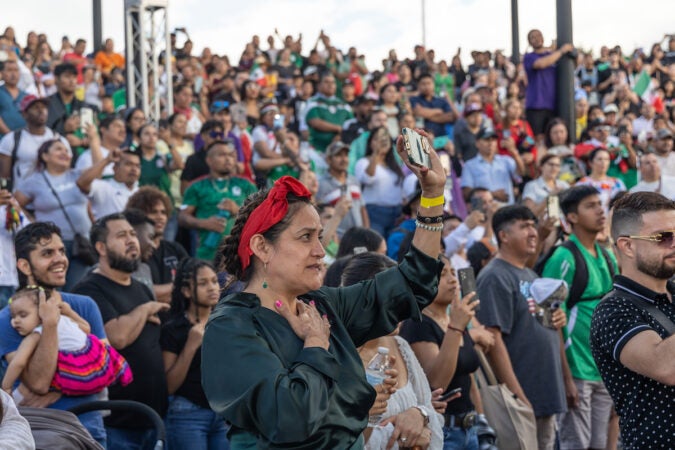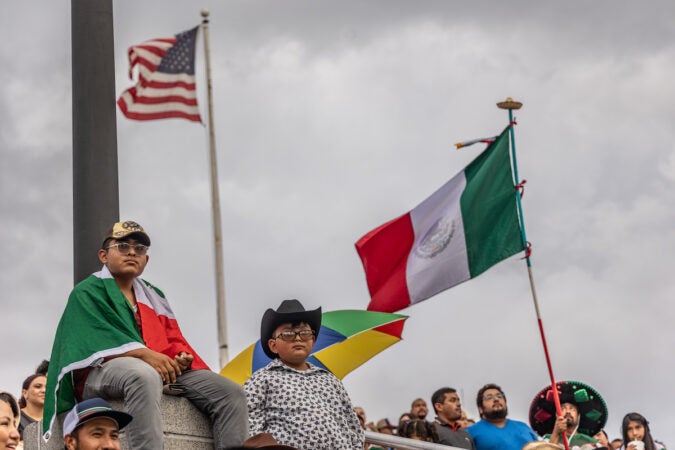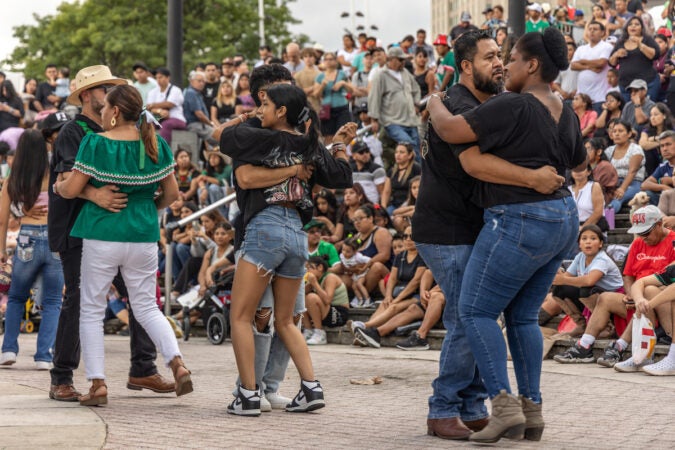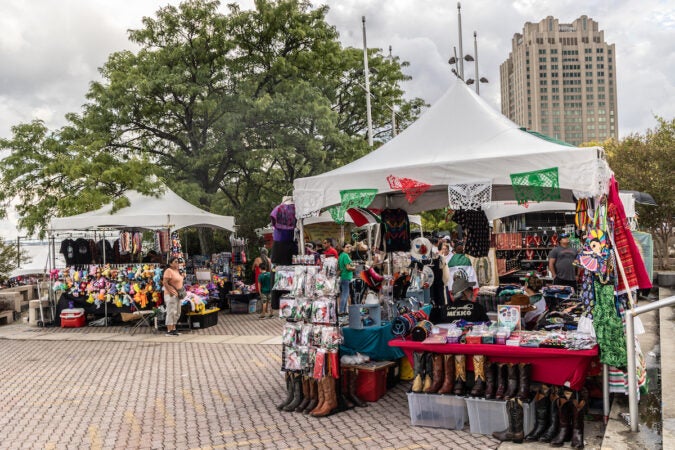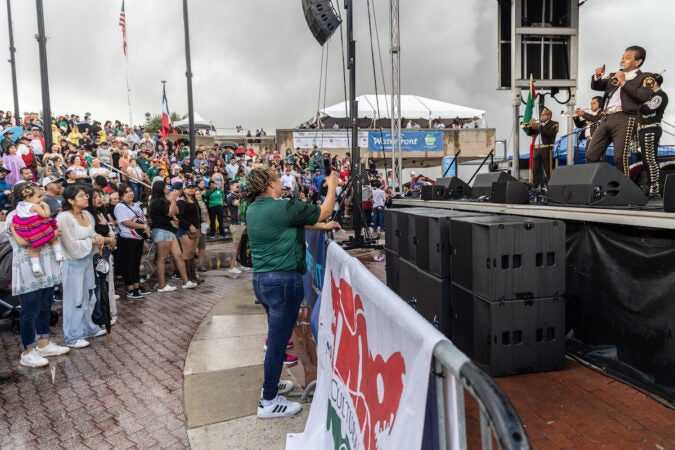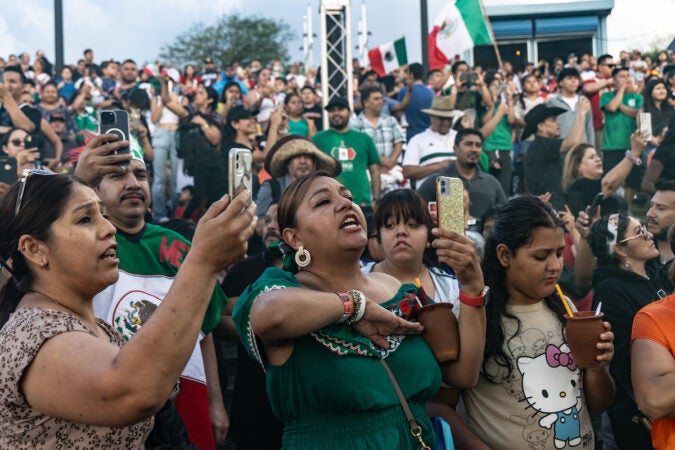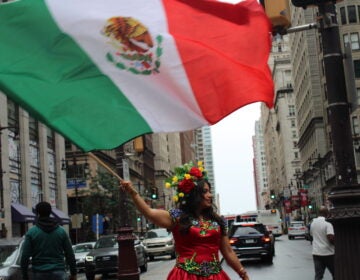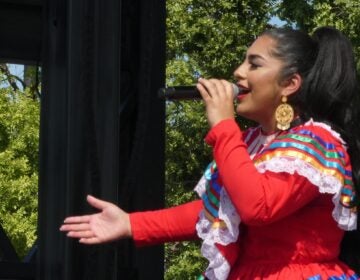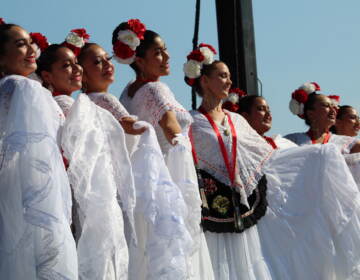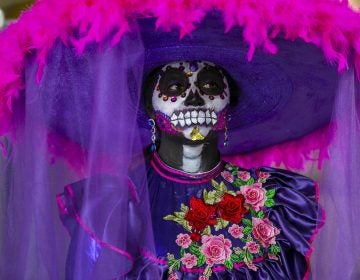Why Mexican Independence Day revelers in Philadelphia shout ‘Viva Mexico’ in historical battle cry
Communities across the Delaware Valley this week hosted historical re-enactments of El Grito de Dolores.
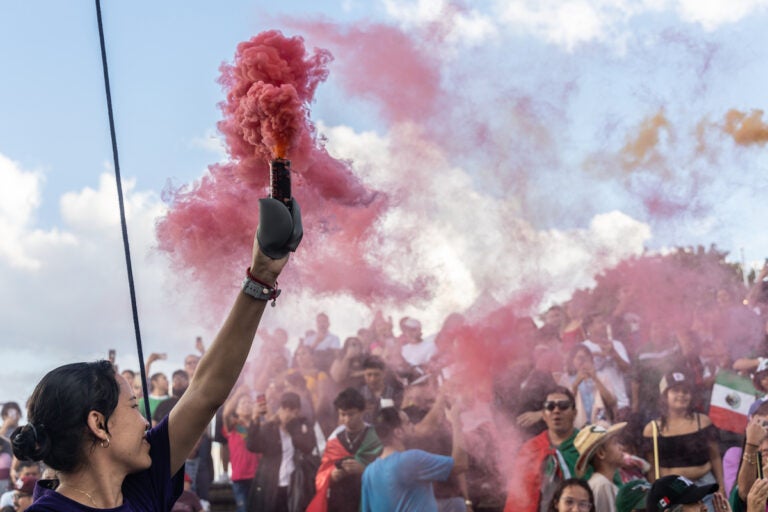
Mexican Cultural Center staff released colored smoke during the El Grito de Dolores ceremony at Penn’s Landing in Philadelphia during the Mexican Independence Day Celebration on September 10, 2023. (Kimberly Paynter/WHYY)
From Philly and the Pa. suburbs to South Jersey and Delaware, what would you like WHYY News to cover? Let us know!
Around 11 p.m. on September 15, the president of Mexico, Andrés Manuel López Obrador, will re-enact a 213-year-old battle cry — El Grito de Dolores — representing the moment that inspired Mexicans to fight for their independence from Spain more than 200 years ago.
While the Delaware Valley is 2,400 miles from Mexico City, it is home to more than 15,000 Mexican immigrants and many more generations of Mexican-Americans proud of their cultural heritage.
Mexican Independence Day, known as Dieciséis de Septiembre in Spanish, is typically celebrated on September 16 each year with festivals, music, parades, dancing and food.
But there’s only one head consul at the Consulate of Mexico in Philadelphia, and Carlos Obrador Garrido can only perform El Grito de Dolores in one place at a time — and there are 15 different events happening across Pennsylvania, Delaware and South Jersey.
So Garrido has a little help from his colleagues to perform the battle cry re-enactments in Vineland and Bridgeton, New Jersey, Hazelton, Pennsylvania, and Wilmington, Delaware.
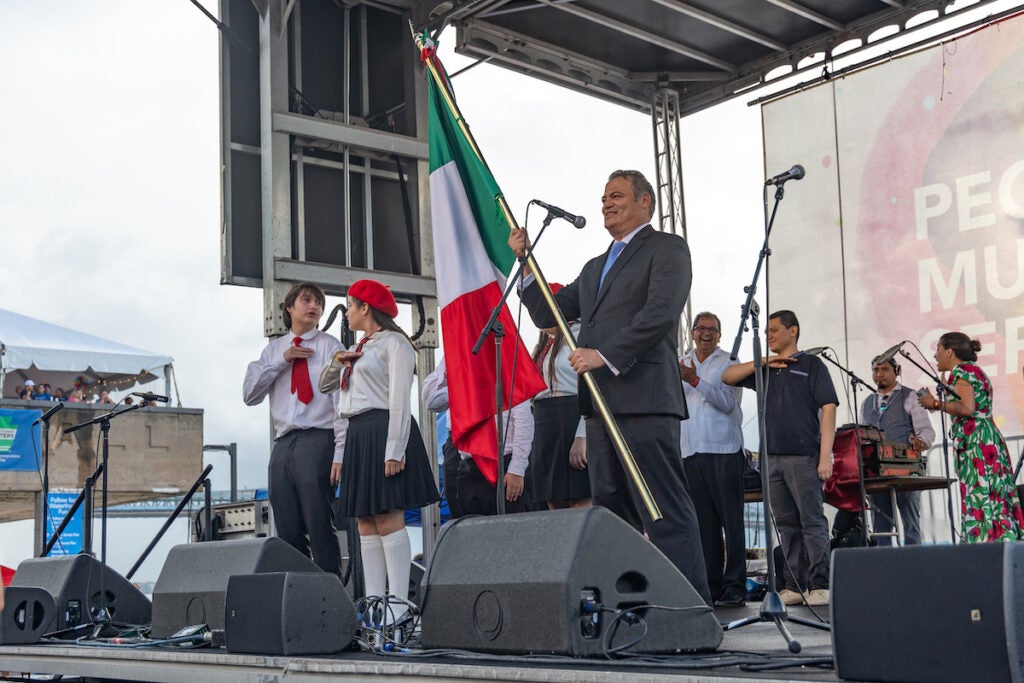
“So you can imagine that I need the help of my friends and colleagues [who are] members of the Mexican Foreign Service that will help me cover and be present at most of the celebrations in our jurisdiction, so we have to divide ourselves to be present,” Garrido said.
El Grito de Dolores is a short call and response, where Garrido or his counterpart will play the role of Father Miguel Hidalgo in the city of Dolores in 1810.
Carlos Obrador Garrido Head of Consul of Mexico in Philadelphia re-enacts El Grito De Dolores for Mexican Independence Day. pic.twitter.com/PNsqBXLySW
— Kristen Mosbrucker-Garza (@k_mosbrucker) September 15, 2023
Catholic priest Miguel Hidalgo and his fellow rebels José María Morelos, Josefa Ortiz de Domínguez, Juan Aldama, Ignacio Allende, and Mariano Matamoros y Guridi rallied Mexicans to fight back against the brutal 300 years of Spanish rule. Since Hidalgo was a priest he began the rally with church bells.
“Viva Mexico” means “Long live Mexico” in Spanish, and the crowd shouts it back at the speaker. The exact speech varies depending on the community, but it usually goes like this:
¡Mexicanos y Mexicanas!
¡Vivan los héroes que nos dieron patria y libertad!
¡Viva Miguel Hidalgo y Costilla!
¡Viva José María Morelos!
¡Viva Josefa Ortiz de Domínguez!
¡Viva Ignacio Allende!
¡Vivan Aldama y Matamoros!
¡Viva la independencia nacional!
¡Viva México! ¡Viva México! ¡Viva México!
On the north side of Philadelphia’s City Hall on Friday afternoon, the Mexican Consulate raised the Mexican flag during a recording of its national anthem. Dozens cheered and danced to a mariachi band waving tiny Mexican flags and twirling folk dresses with expansive colorful skirts.
About 10,000 celebrated at Penn’s Landing on Sept. 10 during the annual festival that ended with fireworks — much like the U.S.’s Fourth of July celebrations.
Garrido said it’s about being proud of Mexican heritage — it took 11 years of fighting to gain independence.
“It is a way of lifting and feeling proud of what we have achieved as a nation,” he said.
Mexico was ravaged by the war that ended in 1821 with its independence. Its agricultural, mining, and industrial sectors declined, and more than half-a-million Mexicans died. The Mexican constitution still used today was adopted in 1917.
Since then, the nation has recovered and grown its economy over the years. Its leaders signed the North American Free Trade Agreement in the 1990s which solidified trade routes between Mexico, the U.S. and Canada.
Araceli Guenther, president of the Mexican Cultural Center in Philadelphia, says that El Grito de Dolores is about cultural preservation.
“It’s an emotional moment for all to see all of the people with you know the flag of Mexico and some of them have it you know around them or the colors of the flag and everybody participates,” Gunther said. “It’s a beautiful thing to see. Our community coming together. Even though we’re far away from Mexico, Philadelphia is our home.”
Guenther says many Mexicans living in America can trace back their ancestors who fought in the Mexican War for Independence, usually by their surnames in historical texts.
“There’s many people that will claim…my great-great-great whoever fought in that war,” she said.
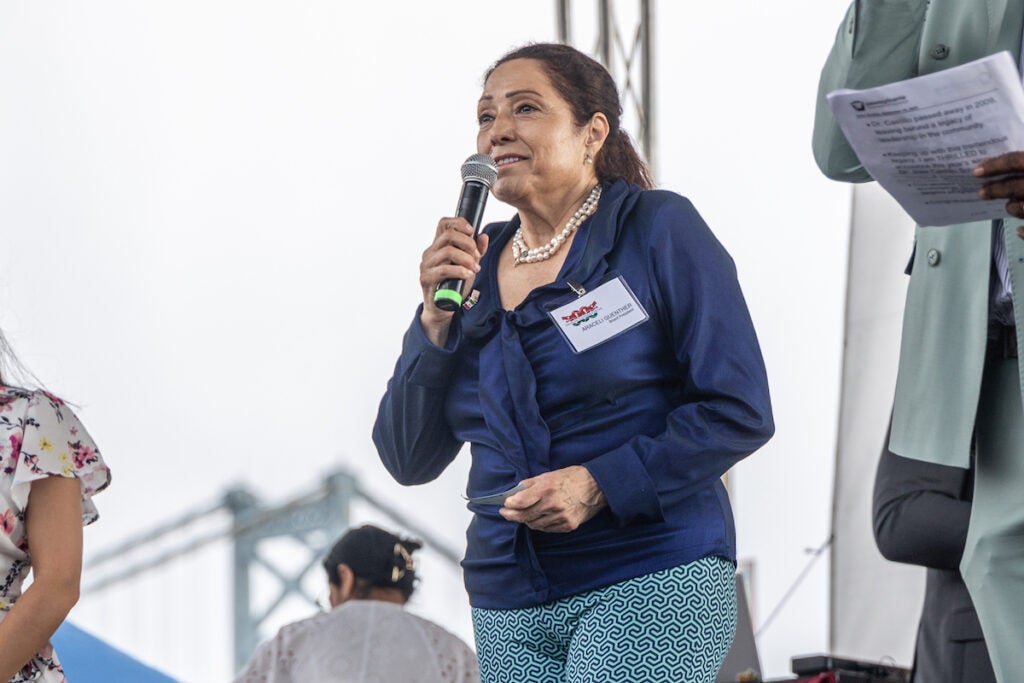
Mexican Independence Day in America is often confused with Cinco de Mayo, which is a different holiday celebrated on May 5. It commemorates the bloody battle of Puebla in 1862.
“It’s another very symbolic event in the Republic of Mexico because France thought they could come in,” she said. “We were weakened after the war [for independence from Spain] so France thought they could take advantage of the situation and do a land grab. But we beat the French army out of Mexico.”

Saturdays just got more interesting.
WHYY is your source for fact-based, in-depth journalism and information. As a nonprofit organization, we rely on financial support from readers like you. Please give today.


